Pan-cancer spatially resolved single-cell analysis reveals the crosstalk between cancer-associated fibroblasts and tumor microenvironment
- PMID: 37833788
- PMCID: PMC10571470
- DOI: 10.1186/s12943-023-01876-x
Pan-cancer spatially resolved single-cell analysis reveals the crosstalk between cancer-associated fibroblasts and tumor microenvironment
Abstract
Cancer-associated fibroblasts (CAFs) are a heterogeneous cell population that plays a crucial role in remodeling the tumor microenvironment (TME). Here, through the integrated analysis of spatial and single-cell transcriptomics data across six common cancer types, we identified four distinct functional subgroups of CAFs and described their spatial distribution characteristics. Additionally, the analysis of single-cell RNA sequencing (scRNA-seq) data from three additional common cancer types and two newly generated scRNA-seq datasets of rare cancer types, namely epithelial-myoepithelial carcinoma (EMC) and mucoepidermoid carcinoma (MEC), expanded our understanding of CAF heterogeneity. Cell-cell interaction analysis conducted within the spatial context highlighted the pivotal roles of matrix CAFs (mCAFs) in tumor angiogenesis and inflammatory CAFs (iCAFs) in shaping the immunosuppressive microenvironment. In patients with breast cancer (BRCA) undergoing anti-PD-1 immunotherapy, iCAFs demonstrated heightened capacity in facilitating cancer cell proliferation, promoting epithelial-mesenchymal transition (EMT), and contributing to the establishment of an immunosuppressive microenvironment. Furthermore, a scoring system based on iCAFs showed a significant correlation with immune therapy response in melanoma patients. Lastly, we provided a web interface ( https://chenxisd.shinyapps.io/pancaf/ ) for the research community to investigate CAFs in the context of pan-cancer.
Keywords: Cancer-associated fibroblasts; Pan-cancer analysis; Single-cell RNA sequencing; Spatial transcriptomics; Tumor immunotherapy; Tumor microenvironment.
© 2023. BioMed Central Ltd., part of Springer Nature.
Conflict of interest statement
The authors declare no competing interests.
Figures
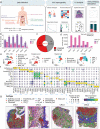
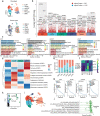

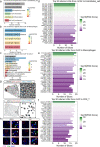
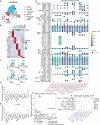
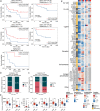
References
Publication types
MeSH terms
LinkOut - more resources
Full Text Sources

